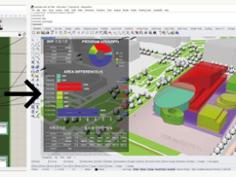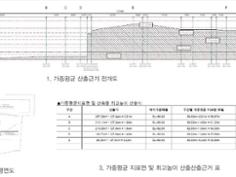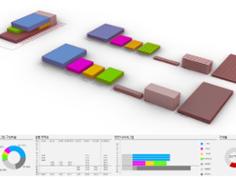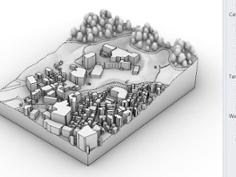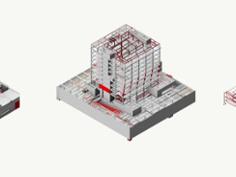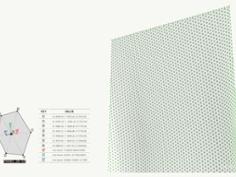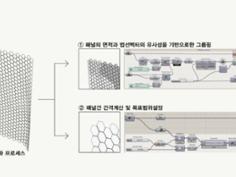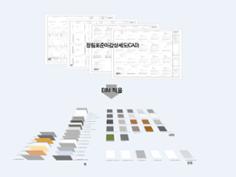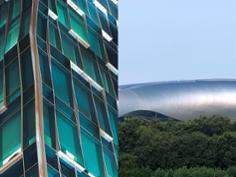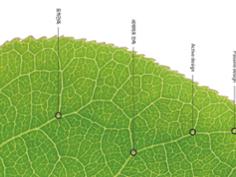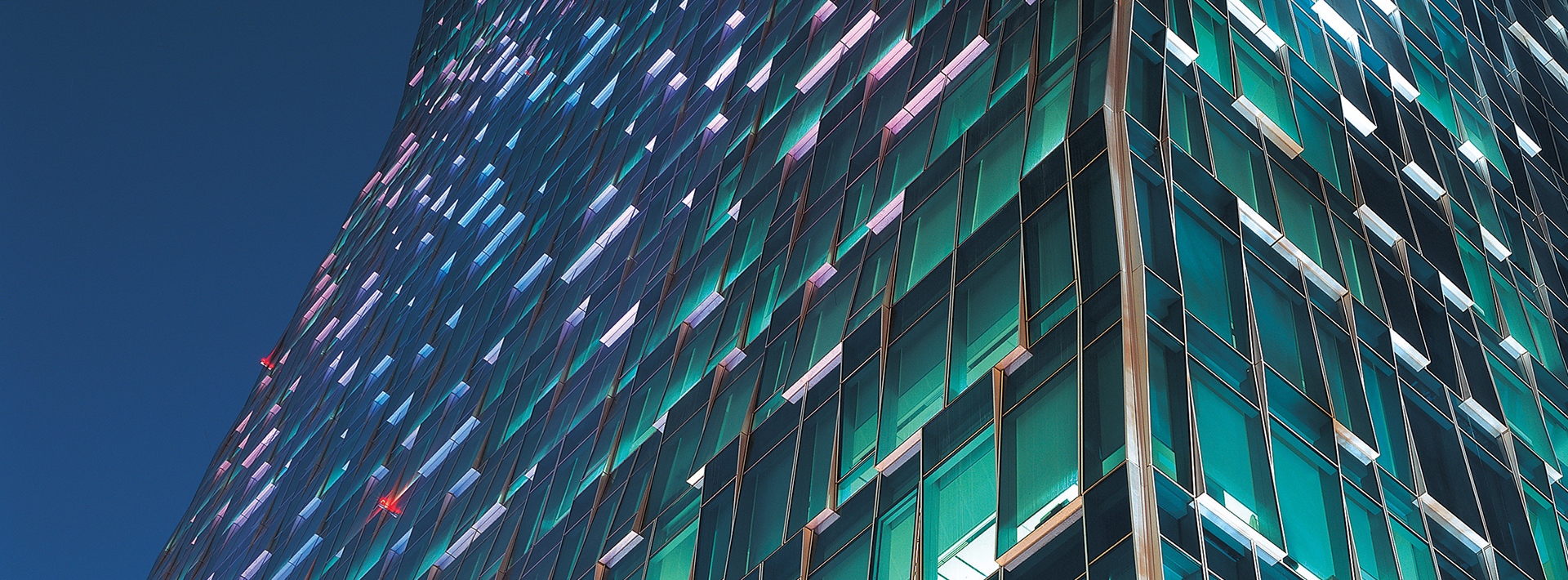
Social Issues of Architecture
Early Constructions of Exterior Walls
Wet construction has been the main method to build up brickwork in Korea since long ago, but used less and less frequently because of such drawbacks as schedule delay and efflorescence. Meanwhile, wind-proof design, external insulation, equal pressure method, and sealants have been developed to cope with all functions required for the external walls.
Emergence of Glass
The emergence of glass as a material entailed the use of lightweight curtain-walls and became a momentum to develop architectural technologies required for super-tall and large buildings.
Closed Joint Construction
This is a method of two-sided adhesion treating rainwater for curtain-wall construction by tightly caulking both gaps on the inside and the outside layers with sealants. For stonework, clear appearance is produced by caulking the inside and fixing the layer.
Emergence of Open Joint
As efflorescence and pollution occurred from mortar-based curtain walls, open joint construction emerged as a dry construction. This method was not much applied in the early days due to its burdens of meticulous design and construction techniques and high cost, but now is applied to the decorative stonework and metal products on the glass curtain walls.
Unit Curtain Wall
As curtain walls entailed construction errors and a variety of components, there emerged a technique of prefabricating components by units completely in a factory and constructing them as if to build up blocks on site. It has a strength that can make the uniform quality of products, minimize the on-site work and compress the schedule, and prevents insulation errors and water leakage.
Technology Example
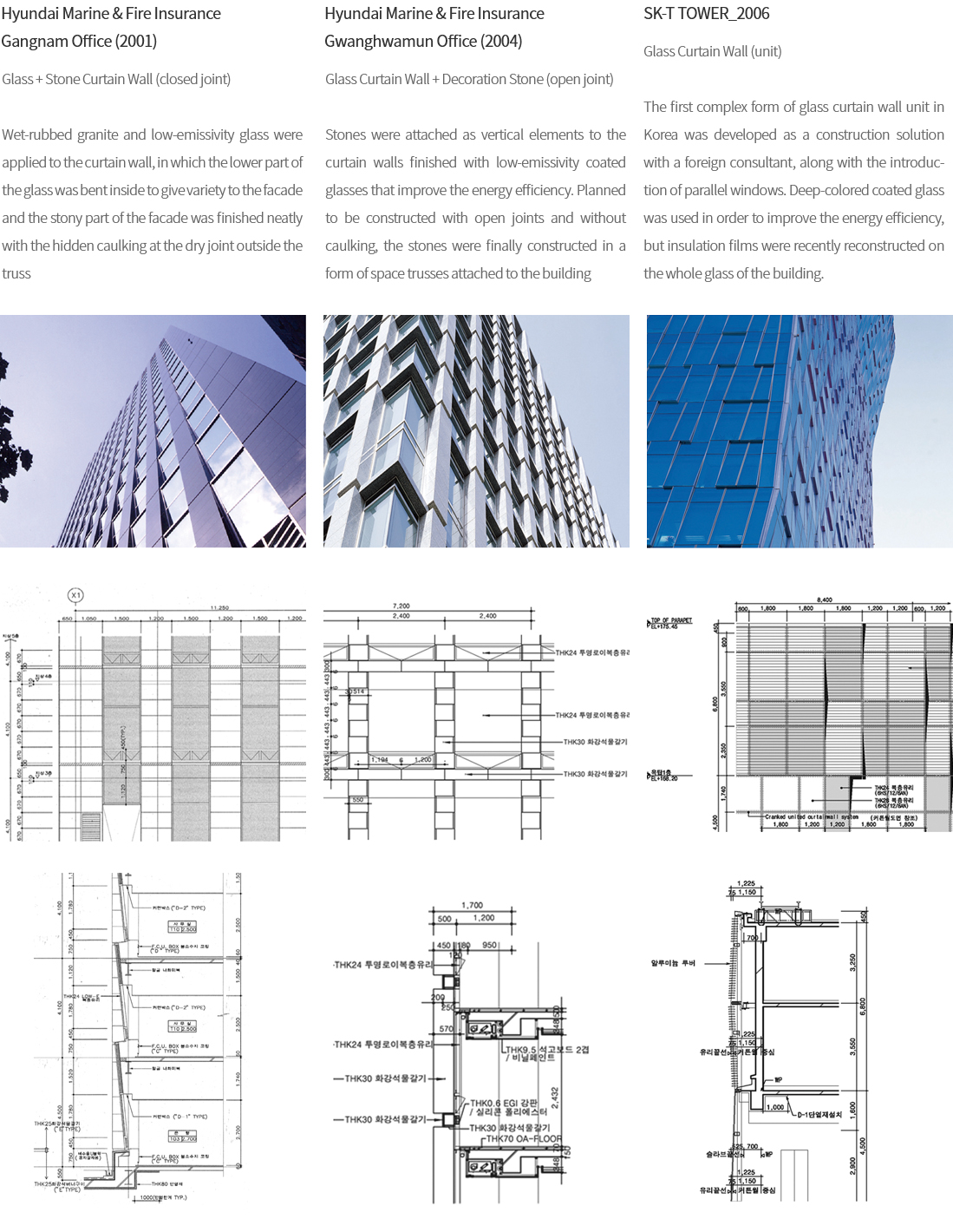
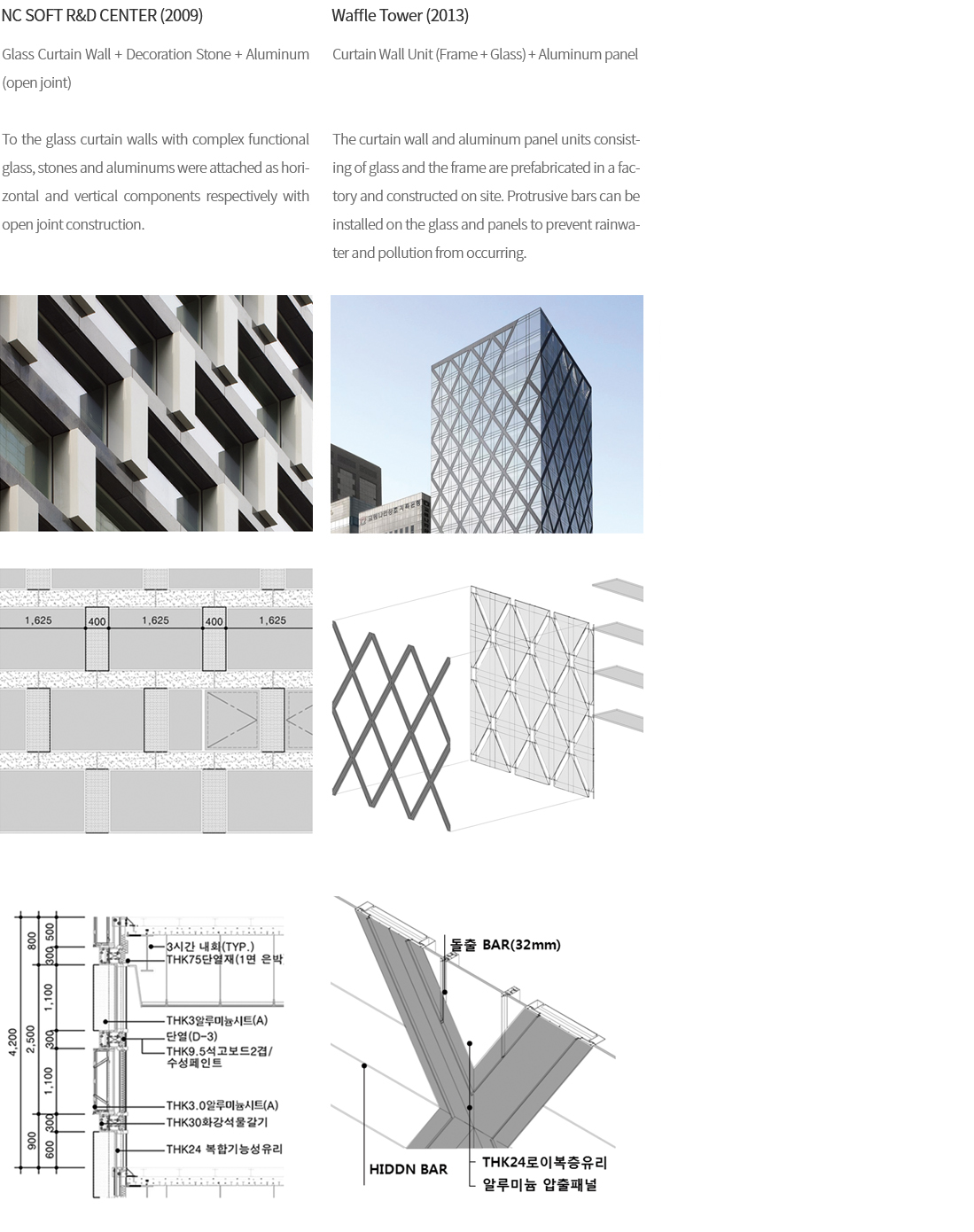
Excerpts from "Begin with the basis, JUNGLIM details of professionalism" (2013)
-
-
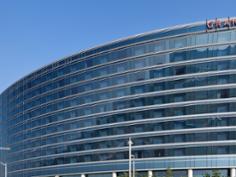 Integration #06
Junglim Architecture's Endeavor for Technological Development
Integration #06
Junglim Architecture's Endeavor for Technological Development
-
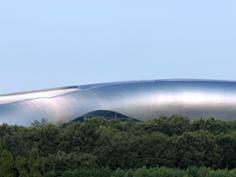 Integration #05
Attempting New Construction Techniques
Integration #05
Attempting New Construction Techniques
-
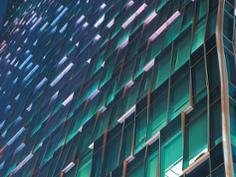 Integration #04
Change of Curtain Wall Construction
Integration #04
Change of Curtain Wall Construction
-
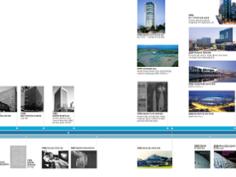 Integration #03
Begin with the Basics: Junglim Details of Professionalism
Integration #03
Begin with the Basics: Junglim Details of Professionalism
-
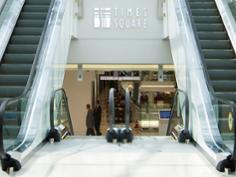 Integration #02
Environmentally Friendly Design Process
Integration #02
Environmentally Friendly Design Process
-

